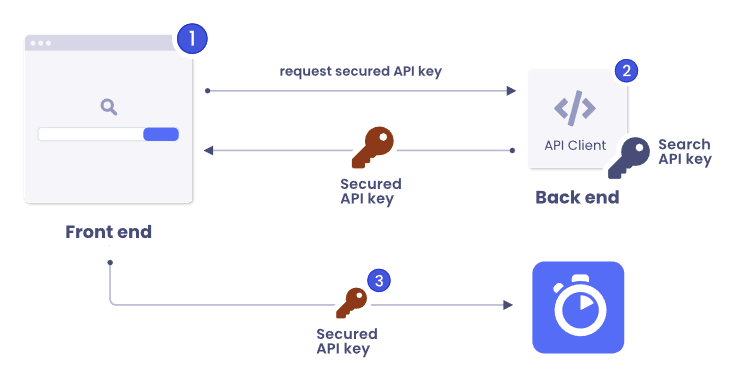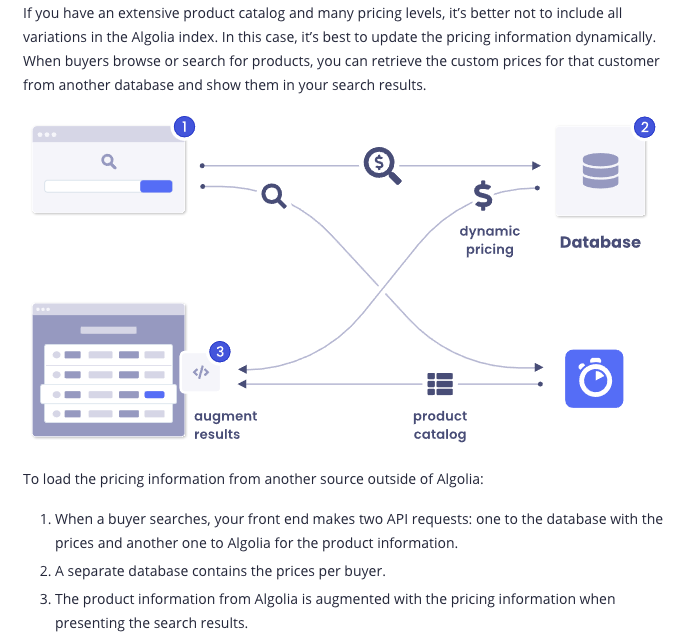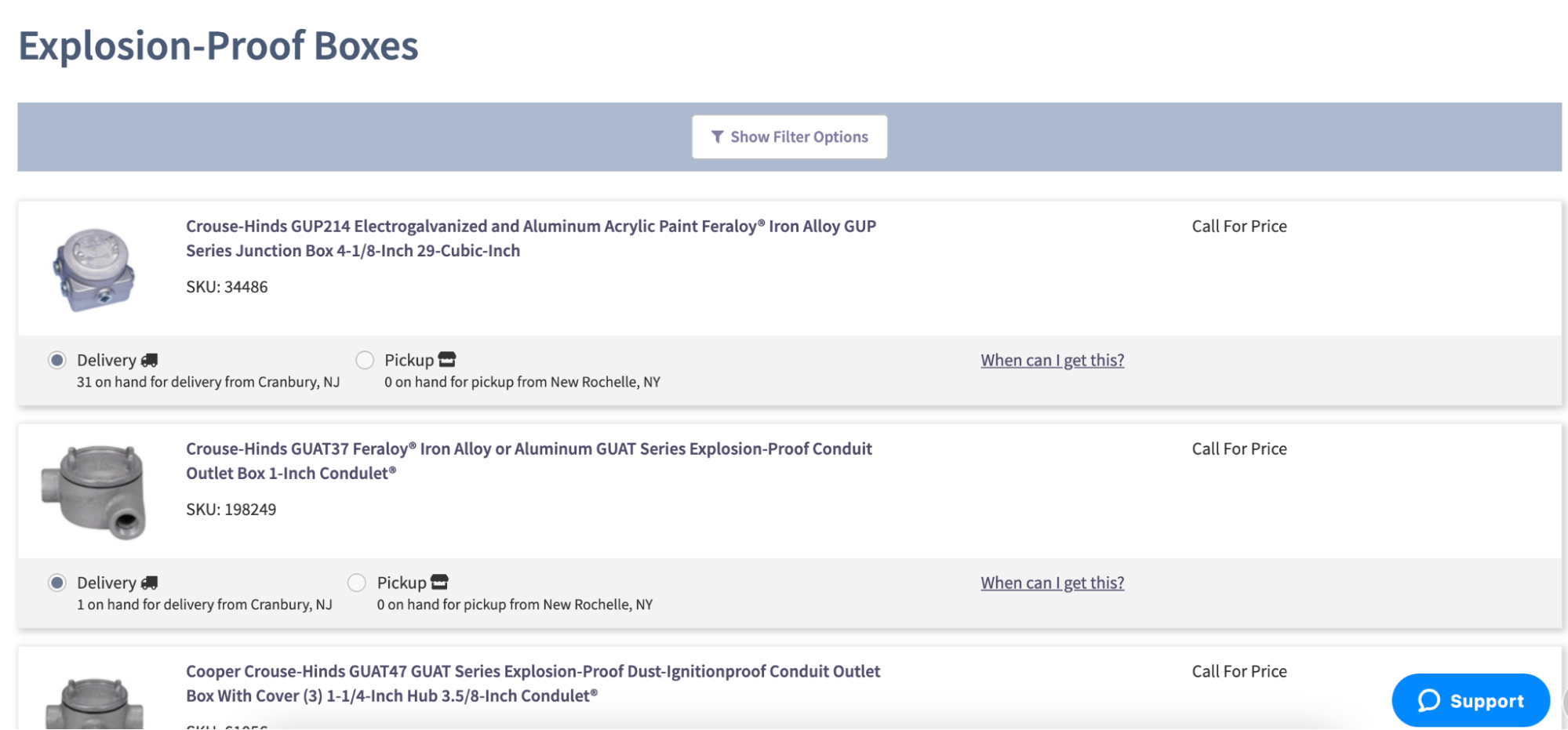

B2B commerce digital transformation: Personalization
source link: https://www.algolia.com/blog/ecommerce/b2b-commerce-digital-transformation-personalization/
Go to the source link to view the article. You can view the picture content, updated content and better typesetting reading experience. If the link is broken, please click the button below to view the snapshot at that time.
B2B commerce digital transformation: Personalization
Nov 15th 2021
Optimizing the Search and Navigation experience on your B2B ecommerce site is an essential step towards digitizing your B2B business. The next step is configuring a well-designed merchandising strategy, including incorporating AI tools, leveraging the “wisdom of a crowd” with automatically generating synonyms and product recommendations, and dynamically re-ranking search results and the order in which products are presented on the category pages. Personalization adds another layer on top of this design.
Personalizing search results and category pages for each user not only minimizes the time shoppers spend searching for products, which we know is a highly important factor and best practice for B2B shoppers, but it also ensures that users always see results most relevant to their unique preferences. Implementing a personalization strategy ensures that each user has a different ecommerce experience on the B2B site that match the user’s specific needs and shopping habits. The expected result will be an increase in customer satisfaction, which is vital to B2B ecommerce success, since a single “user” can actually represent a multitude of users from a large corporation and be responsible for placing large purchase orders. Considering the importance of each single shopper’s experience for the B2B industry, the user journey on an ecommerce site for B2B might be of even higher importance than it is for B2C retailers.
Personalization can have several meanings for B2B companies. In addition to the behavioral personalization at the user level we just discussed, there is a need for personalization at the account level. This type of personalization addresses specific needs of B2B commerce. For B2B companies, selling products and services to other businesses can imply having specific catalogs, prices, or SKUs, which can all be personalized at the account level.
Four ways to personalize the B2B search experience
Types of personalization for B2B ecommerce site:
- Personalized Catalog
- Company vs. Permissions settings
- Personalized Pricing
- Dynamic pricing for each user and customer group
- Personalized Search on SKU
- Search custom aliases by alias
- Behavioral Personalization
- Personalized Query Suggestions
- 1:1 Personalization
Personalized catalogs
B2B product catalogs tend to be complex, with many product variations and specific terms and conditions for each buyer account. Often, the B2B purchasing process is also more complicated compared to B2C, involving different users with different permissions.
For instance, a buyer within an account may have rights to request quotes for a product but not actually make the purchase, or see a different version of your product catalog depending on the products they’re allowed to purchase. When individual buyers search or browse, they expect to find only products they’re entitled to see.
With Algolia, you can use secured API keys to ensure each signed-in user can search or browse only the part of the product catalog they’re entitled to access.

For example, you can use secured API keys to:
- Restrict the search to a specific index
- Apply predefined filters to every search
- Apply predefined search parameters to every search

Personalized pricing
Pricing, inventory stock, and other conditions are customized for each buyer account according to the specific agreements between B2B buyers and sellers. With Algolia, you can ensure that each buyer sees the conditions that apply to them.
Strategies to adopt to handle flexible prices and other conditions, depending on your pricing structure:
- Fixed prices and discounts. If you have one product catalog for all buyers, without variations per-buyer or per-segment, you can use regular B2C solutions with Algolia. Standard prices are fixed (flat) prices for products in the price list. For example, “Public price from”.
- Pricing tiers. If you have customer segments with different pricing tiers, you can index the price for each segment as its own attribute. When buyers search, the prices of the segment they belong to are shown. For per-segment pricing different prices are tailored to different buyer groups.
- Custom prices per buyer. If each buyer account has their own pricing, you can update the pricing information dynamically. When buyers search for a product, you obtain the price of the product for that specific buyer from a database and display it in the search results.
- Volume based Per-unit pricing. Depending on the order quantity, the per-unit prices need to change in real time.
- Negotiable quotes / Spot Contract Pricing (Per-user pricing). Allow your B2B buyers to request quotes and update the pricing information with the negotiated prices directly from the shopping cart. The commerce platform should allow B2B sellers to view, accept, and decline a request for a quote.
Note: Inventory availability or shipping delivery time for a given product could vary depending on B2B buyers. For example, the B2B sellers can allow Apple to buy 10 units and Microsoft to buy 20 units. Pricing and inventory availability would need to be personalized and reflected in real time.
You can choose from many available solutions when implementing personalized pricing. The decision might depend on the business needs and architectural dependencies or other functional limitations. The solution evaluation criteria should consider scalability/record count, usability, and impact on functionality of features such as personalization, merchandising, dynamic re-ranking, recommend, analytics, dashboard usability, filtering & sorting, as well as indexing performance.
An example of a personalized pricing strategy implementation would be lazy-loading pricing information, using one index per customer or per user group:

In the example below, the B2B ecommerce website either requires customers to login to see a specific price or to connect to a sales representative to verify pricing information, according to the previously negotiated prices.

Personalized ‘Search by Alias’
End business users are able to search custom aliases by SKU. For example, a representative for the business commonly ordering a set of cleaning products on the B2B site will be able to enter an alias query “cleaning products” and see a list of all the products typically ordered by them. This type of custom aliases will be unique for a specific user and not available to others. Each of the custom aliases will be personalized for the specific business user profile.
Behavioral Personalization
Personalization strengthens interactive search by adding a personal layer to the relevance strategy. Adding personalized preferences to the search experience makes results more engaging for individual users.
Behavioral personalization allows B2B sites to incorporate historical customer signals in ML to intelligently rank the results, based on data such as:
- Location/Geo
- Preferred Store
- Past purchases
- Past searches
- Preferred brands
- Seasonality by region
- Product / Customer segment targeting (generate groups based on regions and behavior)
When deciding on the personalization strategy, companies need to first analyze which customer signals hold the most value for their business. This will enable companies to control and “customize” the way personalization is applied on the website. For example, we can assign different weights to different aspects of customer behavior, such as assigning higher importance to brand vs. store.
Personalized Query Suggestions: show different users different suggestions for the same query, based on their Personalization profile.
1:1 Personalization: personalize search and browse results to each user profile, based on prior user behavior on the site and unique user preferences. B2B customers often use the same categories and sub-categories when placing orders. Considering that, in most cases, business users need to log in to be able to browse the catalog and make purchases, it’s highly beneficial to track their behavior on the site and personalize their shopping experience.
Personalization is important for the B2B ecommerce industry. There are multiple strategies that can be borrowed from the B2C best practices, such as behavioral personalization. At the same time, there are certain unique aspects and requirements which are particularly common in the B2B industry, such as personalized catalogs and pricing that need to be addressed effectively in order to provide a superior ecommerce experience. By carefully planning digital transition and implementing B2B ecommerce solutions step-by-step B2B retailers will be able to keep up with B2C industry trends and match the shoppers’ expectations from B2B ecommerce sites. Moreover, a composable commerce approach will offer the flexibility and scalability that wouldn’t be available in a traditional tech stack architecture. This approach is giving B2B companies the freedom to evolve fast and become an industry leader. The key to success in B2B ecommerce is to be always ready to adapt to new trends, and to meet the buyers’ expectations and needs at every step of the process.
Recommend
About Joyk
Aggregate valuable and interesting links.
Joyk means Joy of geeK
